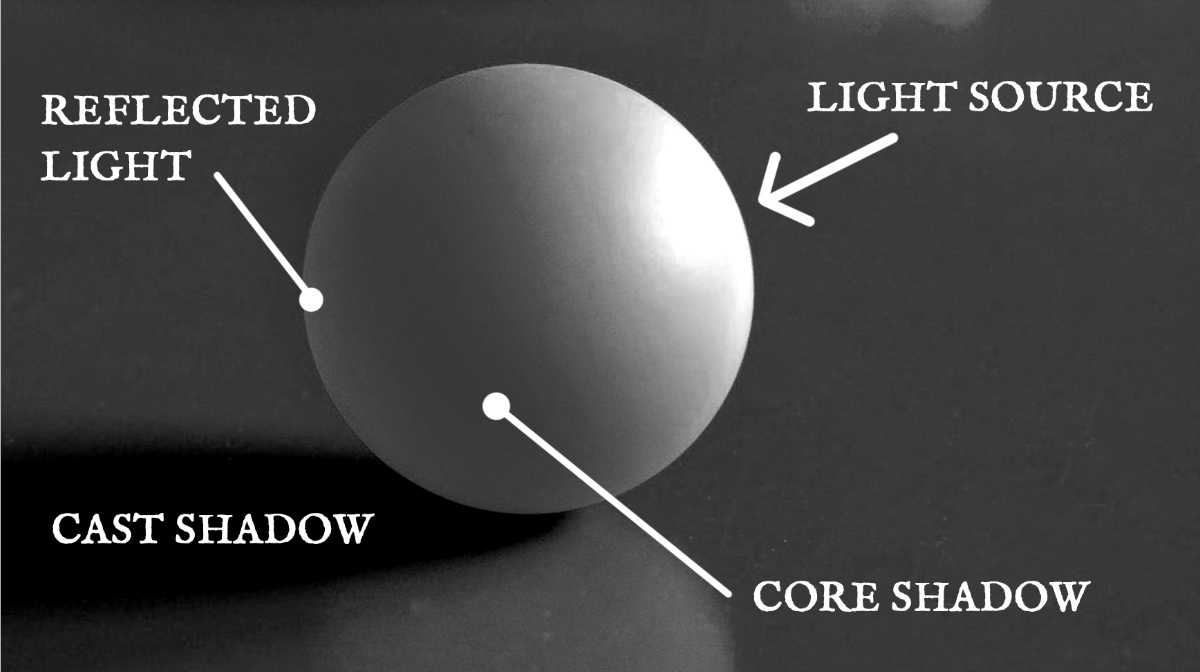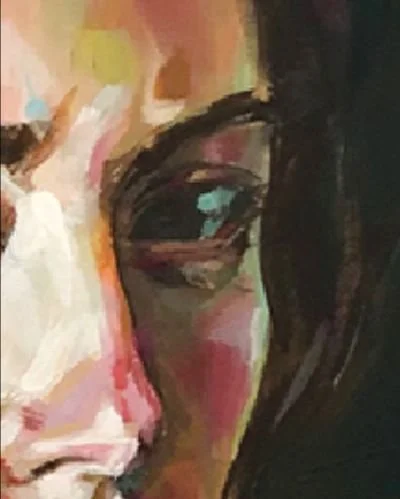Artistic Insight: The Anatomy of a Core Shadow
I love using reflected light in my portraits, and I think it’s too often either neglected or unnoticed by novice artists in their studies of many subjects. Therefore, here's a bit of art 101 I learned in high school regarding reflected light and core shadows.
The Anatomy of a Core Shadow
If one draws a sphere, they may assume that the side in shadow is in complete and absolute shadow, neglecting the presence of what is called reflected light. Reflected light will exist if the subject doesn’t just disappear into a void of white space—light will always be bouncing off of something or other around the illuminated subject. What lies between this reflected light and light from the direct light source is called a core shadow, as that is the surface area with the least amount of illumination.
Light & Shadow
Fun other thing, too, shown in this example of Mary: light and shadow complement each other in hue—as in, cool blue light creates warm, orange shadows, or soft sunny yellow light will create cool purple shadows. In this thumbnail of Mary by her eye you can see warm orange core shadows, and cooler green reflected light.


